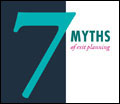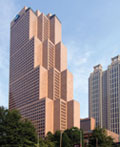The Occupational Safety and Health Administration's (OSHA's) construction industry regulations contain a number of provisions designed to ensure worker safety—personal fall-arrest systems (PFAs) and personal protective equipment (PPE) are two examples.
In some regulations, OSHA states the criteria equipment must meet to be compliant. Consensus standards, such as those developed by the American National Standards Institute (ANSI), are cited in other regulations as benchmarks for employers to follow when selecting equipment for workers to use.
Some OSHA regulations reference earlier ANSI standards the agency has not yet updated to more current versions. Newer ANSI standards applicable to PPE, for example, generally set out stricter test protocols, equipment design features and other manufacturing requirements for PPE used to protect workers. Many manufacturers also have introduced problem-solving, innovative products that can make OSHA compliance more readily achievable and enhance worker safety.
It is important to note OSHA does not test, approve, certify or endorse any equipment or product. Those who market safety and health products often mistakenly state their products are "OSHA-approved" when, in fact, the agency does not have such authority or capability. It is acceptable for a company to market a product as being "OSHA-compliant" if it has performed the necessary testing under requisite conditions to verify a product meets minimum OSHA specifications.
Eye protection
The OSHA construction standard cites ANSI Z87.1-1968, "Practice for Occupational and Educational Eye and Face Protection," when describing protective eyewear for workers subject to eye and face injury from physical, chemical or radiation agents.
However, the most current ANSI standard for eye protection is ANSI/ISEA Z87.1-2010, "Occupational and Educational Eye and Face Protection Devices," which classifies eye protection as either impact-rated or nonimpact-rated.
Impact-rated protectors have passed all impact testing under the standard; nonimpact-rated protectors have not passed all impact testing. Impact-rated protectors are marked Z87+, and nonimpact-rated protectors are marked Z87. Eyewear also will have manufacturer's markings and may have other markings such as lens shade markings. The Z87.1-2010 standard also has a requirement for increased lateral or side shield coverage that affords wearers greater side protection.
Most manufacturers' protective eyewear complies with the recent ANSI/ISEA standard though OSHA construction regulations do not reference the most recent versions. Make sure you purchase protective eyewear marked Z87.1+ for the greatest protection for workers in light of the fact there is no set compliance or deadline date by which earlier versions must be sold or used.
Although not specified by OSHA or ANSI, lens fogging can create a hazardous condition for workers on roofs or those working with hazardous equipment or chemicals. A number of manufacturers, such as 3M, Pyramex and Uvex,® sell protective eyewear models that meet ANSI impact ratings and have special lens coatings that resist fogging, making the eyewear more effective for worker protection.
Head protection
ANSI Z89.1-1969, "Safety Requirements for Industrial Head Protection," is the consensus standard OSHA references in Subpart E of its construction regulations. The standard's most current version, ANSI/ISEA Z89.1-2009, "Industrial Head Protection," still contains testing requirements for penetration and impact resistance, but three significant nonmandatory tests also are set out in the 2009 version.
The most important of the tests involves an issue that has dogged safety professionals for years: "Can a worker wear a hard hat backwards?"
Under the previous ANSI standard, the answer was "no" because a test protocol to assess a hard hat's impact and penetration resistance was not available under the standard and few manufacturers tested hard hats in the reverse configuration. The new standard provides for a nonmandatory "reverse-donning" test to allow workers to wear compliant hard hats with the bill facing backward. Hard hats meeting this requirement are marked with this symbol:  .
.
Other nonmandatory tests under the ANSI standard determine whether a hard hat possesses low-temperature strength or high-visibility properties. Hard hats that comply are marked "LT" and "HV," respectively.
Footwear
For occupational foot protection, OSHA construction regulations reference ANSI Z41.1-1967, "Men's Safety-Toe Footwear Standard." However, ANSI withdrew the standard in 2005, and the testing and design requirements manufacturers now follow for safety footwear can be found in two ASTM International standards: ASTM F2412, "Test Methods for Foot Protection," and ASTM F2413, "Specification for Performance Requirements for Protective Footwear."
The test methodologies in the ASTM International standards do not vary significantly from the ANSI standard, but you will be hard-pressed to find any inventory that is labeled or contains a specification citing compliance with the ANSI standard OSHA cites.
From a roofing contractor's perspective, safety footwear marked as ASTM-compliant should have, at a minimum, puncture-resistant soles and impact and compression-resistant toe areas. Metatarsal protection and electrical resistance are additional features.
Ladders
The nonmandatory appendix to the OSHA construction regulations related to ladders cites 1982 ANSI standards related to wood, metal and plastic (fiberglass) ladders. The 2000 versions of the ANSI metal and plastic ladder standards include a duty rating for a higher-capacity Type IAA (375-pound capacity) over the highest rating of Type IA (300-pound capacity) of the earlier version. Regardless of the outdated OSHA reference, ladder manufacturers have been marketing Type IAA ladders, along with ladders possessing the original four other duty ratings, for some time.
Common OSHA citations involving ladder usage often include ladders not set up at least 3 feet over the eave or upper landing surface or not being tied-off. A number of new products may be useful for tying off the top of a ladder, such as those manufactured by Guardian Fall Protection, Safe T Climb Inc. and LSA. These products attempt to address a common problem with tying off a ladder—there often is nothing solid to secure the ladder to at the eave or landing surface.
Fall protection
One of the most significant issues in roofing industry fall protection is establishing a suitable anchor point for PFAs. Permanent anchor points that meet OSHA's requirement of 5,000 pounds rarely are available on most roofs. In addition, installing temporary anchors often requires damaging a roof membrane. Some new products are available that do not require roof membrane penetration. DBI/Sala makes a door jamb anchor that can be used if there is a penthouse access door to a roof.
EcoAnchor is a neoprene water bladder that weighs about 20 pounds when empty but weighs more than 900 pounds when filled with water and can provide fall protection to a 220-pound worker on certain low-slope roof systems.
Guardian Fall Protection, Kee® Safety Inc. and DBI/Sala make counterweight systems that use free-standing weights connected in a group without penetrating the roof membrane to provide a fall-protection anchor for workers on low-slope roofs.
For steep-slope roofing applications, manufacturers continue to struggle to produce a fall-protection device that is simple to install and does not increase worker exposure during an extended installation process. This is particularly important in roof system repair situations and in a variety of steep-slope roofing applications. OSHA's recent action that effectively banned the use of slide guards has left a void in roofing worker protection that no manufacturer to date has been able to fill with a proven, effective product.
The current availability of safety and health products for the roofing industry holds some good news for contractors. Manufacturers have developed many innovative, useful products designed to enhance worker safety. However, in the area of steep-slope roofing, a "silver bullet" type of fall-protection product applicable to a variety of roofing applications remains elusive.
Know what's current
You should be aware of the general content and status of standards applicable to equipment such as PPE and how those standards may help strengthen worker safety. But you also must understand OSHA regulations do not always reflect updated standards and should not be relied on solely as a resource when selecting equipment for worker protection.
Harry Dietz is NRCA's director of risk management.
Did you know?
The Occupational Safety and Health Administration (OSHA) has published its Top 10 list of the most frequently cited violations for fiscal year 2011, covering the period of Oct. 1, 2010, through Sept. 30, 2011; the list follows:
- Fall protection
- Scaffolding
- Hazard communication
- Respiratory protection
- Lockout/tagout
- Electrical—wiring methods
- Powered industrial trucks
- Ladders
- Electrical—general requirements
- Machine guarding
To help contractors keep workers safe, NRCA offers a wealth of safety information, such as its Pocket Guide to Safety and safety manual. More information can be found at shop.nrca.net.



